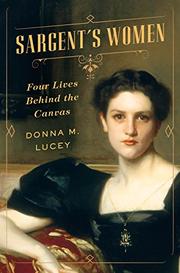The Kelloggs: The Battling Brothers of Battle Creek Howard Markel (2017)
In the small southwestern Michigan city of Battle Creek, two brothers distinguished themselves in separate but related arenas. John Harvey Kellogg (1852-1943), a physician and author, established the Battle Creek Sanitarium (“the San”) in 1878, treating thousands of patients and promoting some surprisingly prescient wellness regimens on both dietary and exercise fronts. Will Keith Kellogg (1860-1951) founded the Battle Creek Toasted Corn Flake Company (now the Kellogg Company) in 1906, revolutionizing breakfast foods through manipulation of ingredients and industrial mass production.
Both brothers were raised as Seventh-Day Adventists and sought, at least early in their careers, to advance the tenets of this faith, which encourages regular physical exercise and prohibits meat, tobacco, sugar, caffeine, and alcohol. John and Will experimented extensively to find food products that would be acceptable to Adventists and that would also encourage “biologic living” in the general population. Two strong-willed characters, they frequently clashed, and Will finally left his position as business manager of the San to go national with corn flakes, the cereal that seems to have been a joint invention. In the 1920s, John became involved with the eugenics movement and set up the Race Betterment Foundation; medical historian Howard Markel treats frankly the brutal racism inherent in eugenics theory, now scientifically discredited. Although John’s Sanitarium buildings were sold off in 1942, Will’s food empire continues to this day, as does the humanitarian WK Kellogg Foundation that he created with his massive profits.
In researching this book, Markel did not have access to the many private documents that Will Kellogg placed in a highly restricted archive at the WK Kellogg Foundation, yet this dual biography is exhaustive, drawing on numerous other archival sources. I was especially taken with Markel’s background information on nineteenth-century dietary, public health, and medical practices and with his explanations of the grain-processing machinery that the Kelloggs invented by trial and error. I decided to overlook occasional outlandish analogies. (One painful example: Will was “slower to pardon than most glaciers used to melt.” 336) The Kelloggs is not only a lively and fair-minded story about two dynamic, flawed men but also an absorbing chronicle of their era.
Sargent’s Women: Four Lives Behind the Canvas Donna M. Lucey (2017)
If you like Gilded Age gossip, this is a multi-biography that you may want to read. I thought it would be focused primarily John Singer Sargent’s relationship with four of his female subjects, whose portraits are widely known and reproduced: Elsie Palmer, Sally Fairchild, Elizabeth Chanler, and Isabella Stewart Gardner. (That’s Elizabeth Chanler on the cover of the book.) Sargent painted portraits of these wealthy American women between 1888 and 1922, but in fact his contact with them outside his professional role was fairly limited.
So . . . what this book does offer is a view into the excesses that the upper classes indulged in during a period of American industrial expansion and political corruption. Oddly, the chapter that is supposed to be about Sally Fairchild is devoted almost entirely to the biography of her sister, Lucia, whose portrait Sargent did not paint. My favorite section was the one on Isabella Stewart Gardner, whose private art collection became the famed art museum in Boston that bears her name. Do watch out for typos and small errors in this book as well as in the Kellogg book reviewed above.




